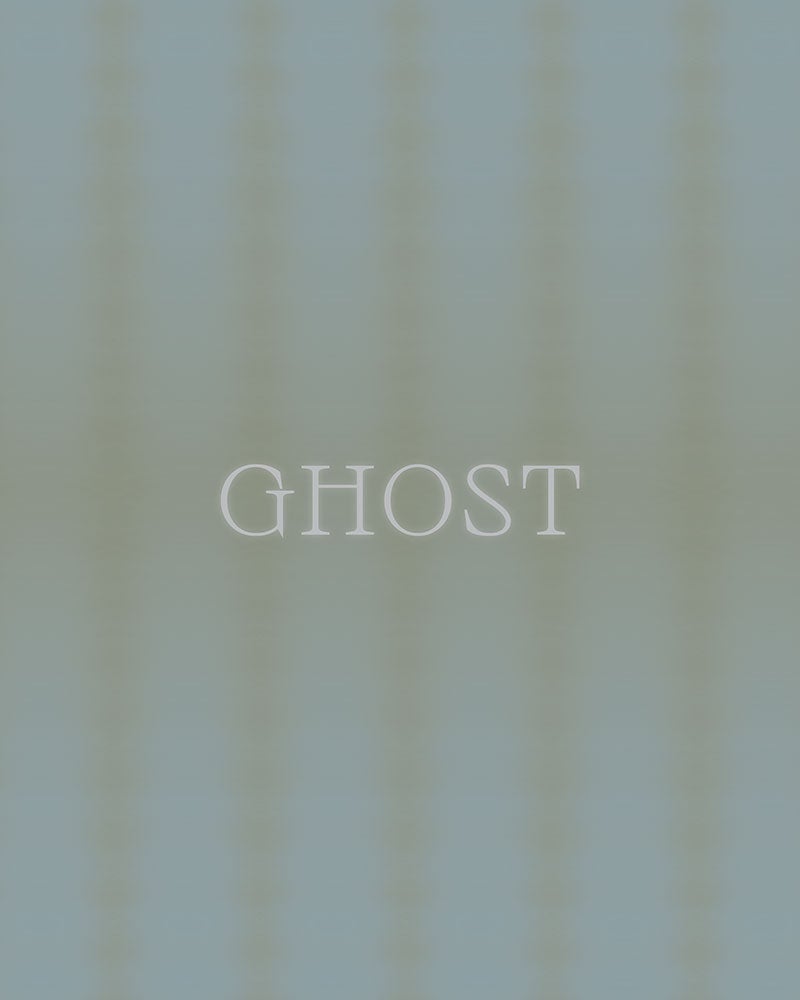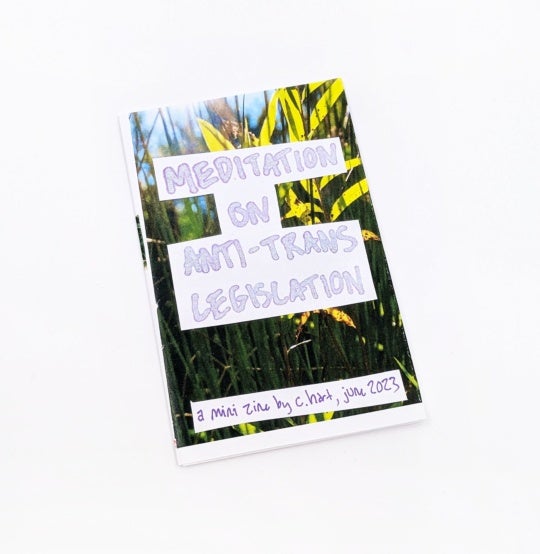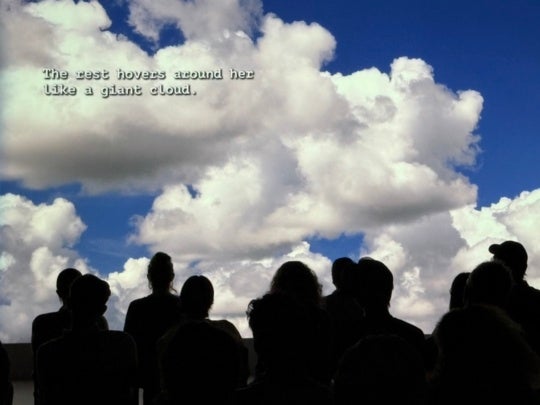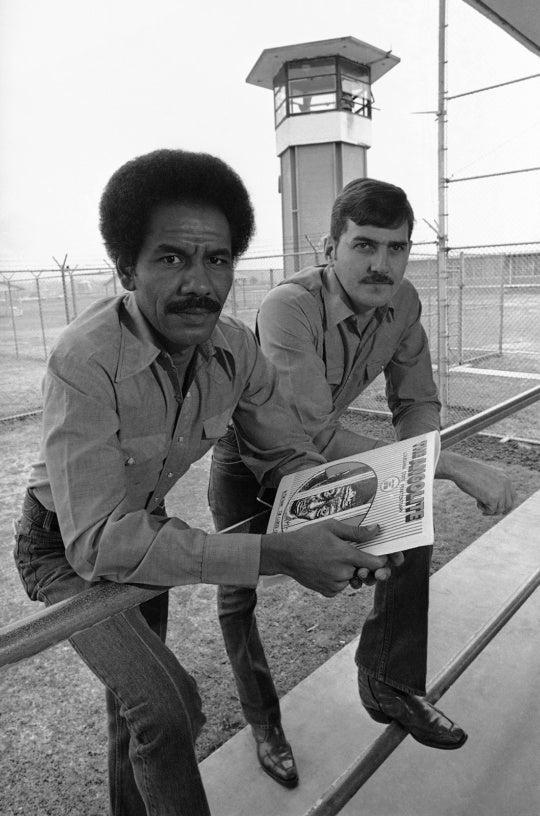
Ghosts are ubiquitous in the modern world. Imaginations have been overloaded with them for some time now, enough for certain academics to call for a “spectral turn”.[1] This fascination subsumes both the habitual viewer of haunted house television shows and the humanities scholar. Miami-born artist larí garcia’s expansive sculptural practice is also based on an understanding of the ghost world and its potency. Garcia graduated from the Virginia Commonwealth University School of Art’s Sculpture and Extended Media department, known for its attention to materiality. Their objects and installations combine organic essences (cucumber slices, deer bones, onion skins), found objects, and both figurative and abstract forms sculpted by the artist. In their work, absence is as tangible as presence.
Manifested across garcia’s work is the transformative magic of decay. In missing pass (2021), their graduate show installation in Richmond, VA, the vocabulary emerged of forms and textures that had no straight angles, lacked cohesion, and looked like they could be blown away by a moderate gust of wind. The work invited the viewer to mind their step so as not to further disturb the floating assembly of sand, dry leaves, sticks, and other detritus. You were in the middle of a ritual, a scattering of means to an uncertain end.
Soon after graduating, they attended the Core Program, a two year residency at the Glassell School of Art and the Museum of Fine Arts, Houston, and began to solidify their approach to sculpture. In two ants dancing (2024), garcia’s contribution to Core’s annual show, the artist went monumental, procuring a deflated parachute to serve as the a pedestal and sculpted a fallen horse as a nod to the painful past and uncertain present of the Texas ranch.
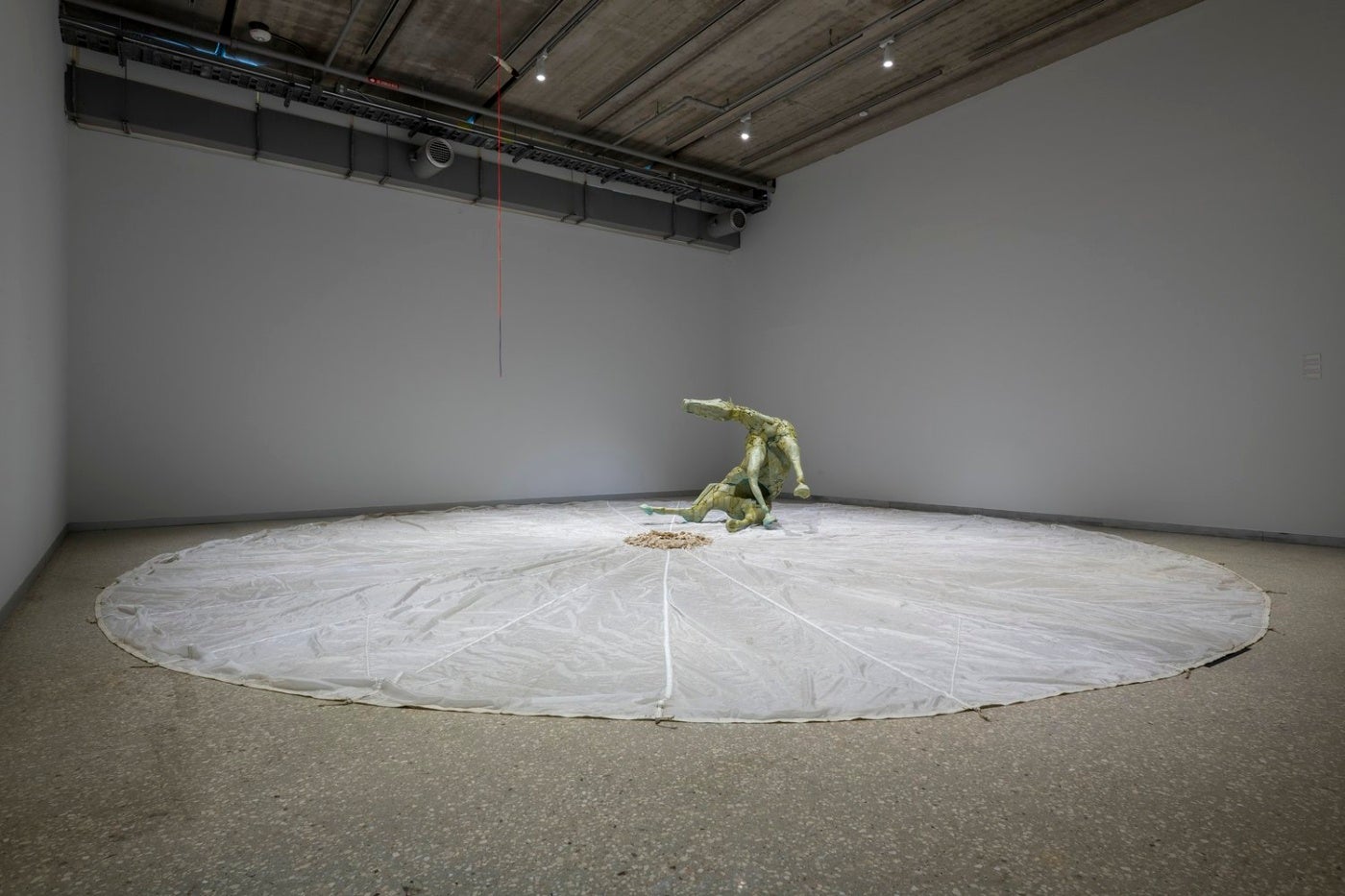
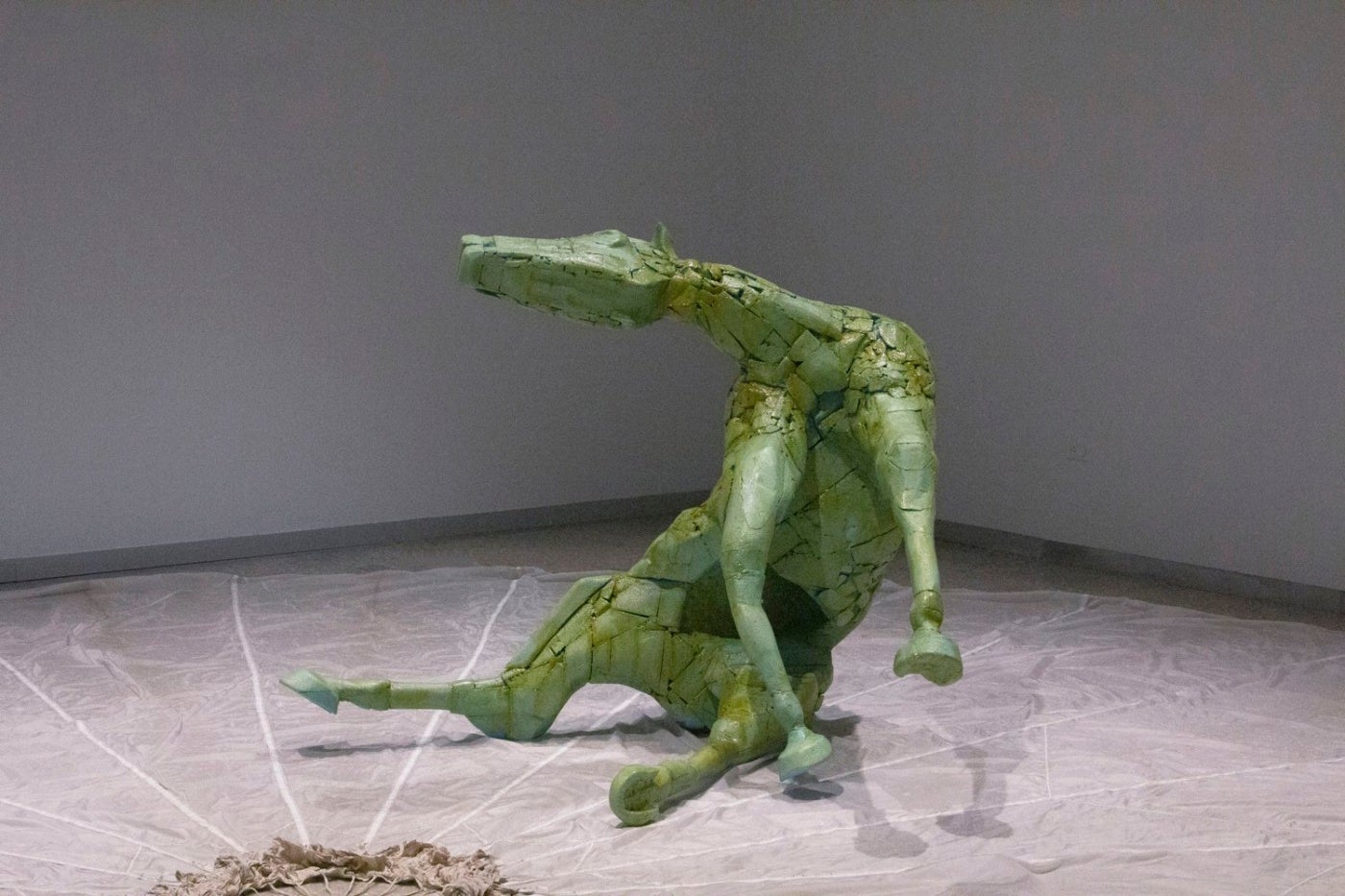
Their latest and biggest work to date, while you were out (2025), goes back to the ephemeral constellation of earlier work, but on a much more dramatic scale. It is an assemblage of evocative things and spaces that cumulatively address the loss of contact with significant people, or, more precisely, the traces those people leave in physical and psychic environments. Thanks to the sheer variety of media, garcia’s installation often transcends interior monologues to exterior habitats. While You Were Out, puts the viewer into an uneasy trance in order to draw connections between the objects. In one of their whimsical gestures, garcia even stages a fake ceiling leak in one of the galleries, a puddle of liquid that inspired the visitors to acts of divination, trying to see a face or a creature in the contours.
The decoding of puzzles and puddles is central to the experience of garcia’s sculpture. It actively invites the viewer to imagine multiple encounters with ghostly presences. Ghosts are notoriously hard to parse, visually and mentally. In order to better understand what garcia’s installation is doing, terminology must be defined. Spirit: separate, ghost: familiar. A specific force animates the spirit, while the ghost is almost always a reappearance of someone or something officially thought dead. Spirits are possessive, while ghosts mostly declare their presence passively. While the distinction is important, both speak to ancestry. It can be troubling when it’s connected to genocide of Black, Native American, or Mexican communities, or empowering if it transcends historical trauma to instill energetic agency in the living.
A human presence is denoted by a coat hanger with a baby’s jolly jumper with protruding chicken feet on thin aluminum rods pointing to the floor. “The ghostly figure is as potent as the figure itself,” garcia asserts.
Garcia comes from a lineage of Lucumi mediums, a Afro-Cuban and Dominican practice of communing with the dead, mixed with Catholicism. Refusing to take up the matrilineal profession, garcia works through deep immersion in the materiality of grief. In their work, objects slip, in their words, “in and out of representation” as “the corrosive nature of grief” manifests itself in a careful arrangement of textures.[2] Historian Martyn Hudson’s definition of the relationship with ghosts as essentially ‘parasocial,’ when “different social species” inhabit “the same communal dwelling—interacting, contesting, and mutually perpetuating.”[3] Thinking of ghosts as part of human’s social worlds allows, acocording to Hudson, “to see the mutuality and necessity of human/spectre cohabitations.”[4] Ghosts could be anywhere. The recorded voice of a dead relative. The sixteen-months-old selfie that pops on your screen every time the ex calls. Garcia fully recognizes the role of the parasocial relationship and enhances the viewing experience of While You Were Out by placing audio recordings of ghost sightings by the artist and their family. In one instance, garcia’s aunt Alexandra is driving through Puerto Rico and sees “a headless man”, “dried blood crusted around his neck and splattered down onto old dusty clothes, barefoot.” In another, the artist waits for the lights to change at an intersection and hears a knock on their car passenger window, but no one is there.
A sense of hasty abandonment whistles though the installation, countered by the painstaking arrangements of detritus. In the first room, an assemblage of light wooden planks recalls the early stages of construction for a cheap home. This is a direct reference to garcia’s past construction jobs. Two house framings mirror each other at slight remove. They are filled with animated detail. A piece of matte plastic has a liquid perpetually streaming down. Onion skins and paper are scattered through as if a gust of wind just blew in the galleries. These are rooms where something happens through an assemblage of mysterious objects that include deer bones, a butterfly wing, a stomped-on bucket with gallon of unidentified fluid, and many other crumpled and creased things stuck between trash (random) and sculpture (purposeful). A human presence is denoted by a coat hanger with a baby’s jolly jumper with protruding chicken feet on thin aluminum rods pointing to the floor. “The ghostly figure is as potent as the figure itself,” garcia asserts. When all the materials and objects align, an “ecstatic encounter” happens so that the absent person can be intuited through their ritualistic arrangement. The arrangement is intensely personal with its use of private objects, but the logic of their placement can be decoded by any hoarder who saves old notes, insignificant finds, and other stuff to keep mementoes of those who are gone.
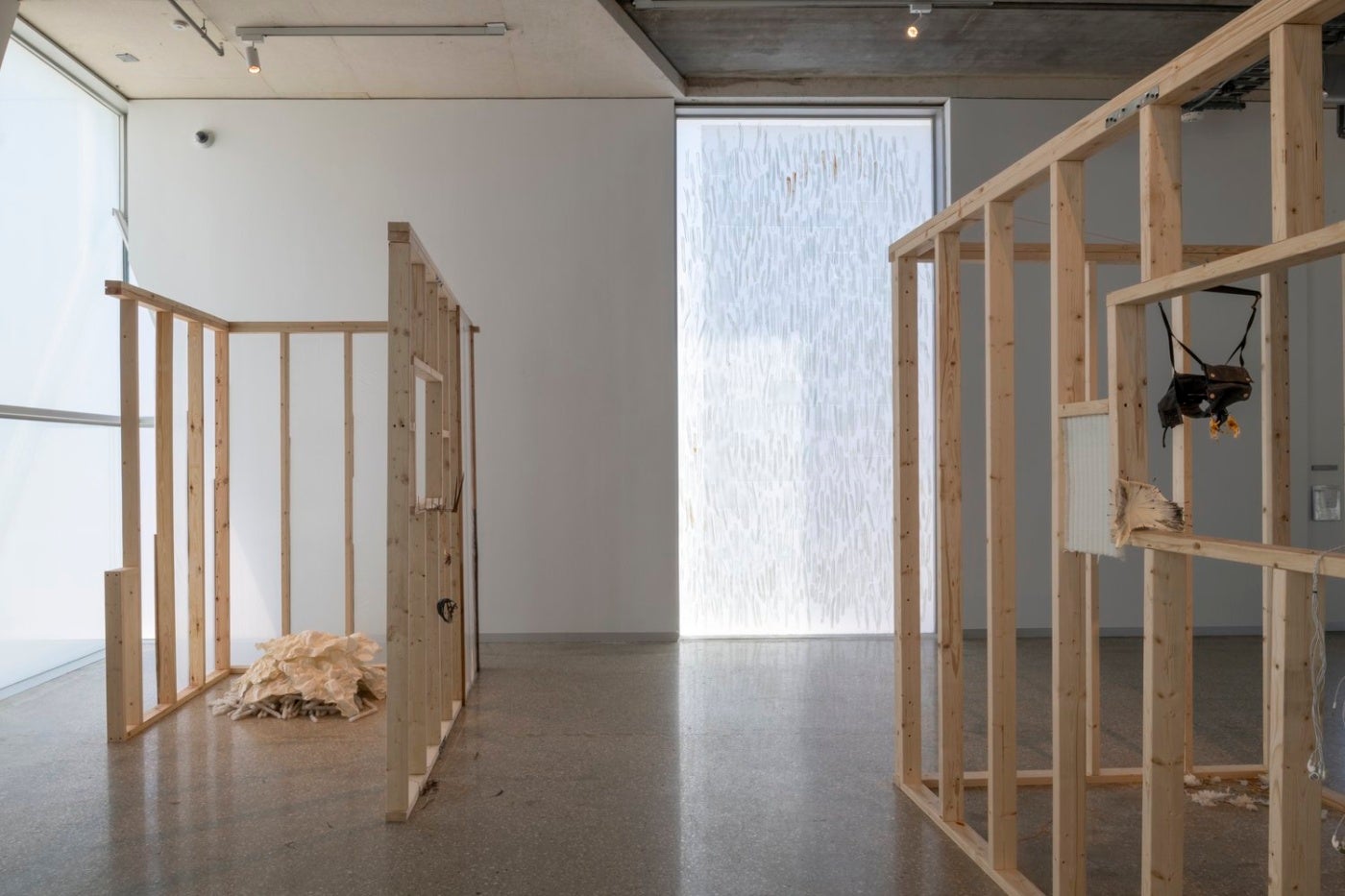
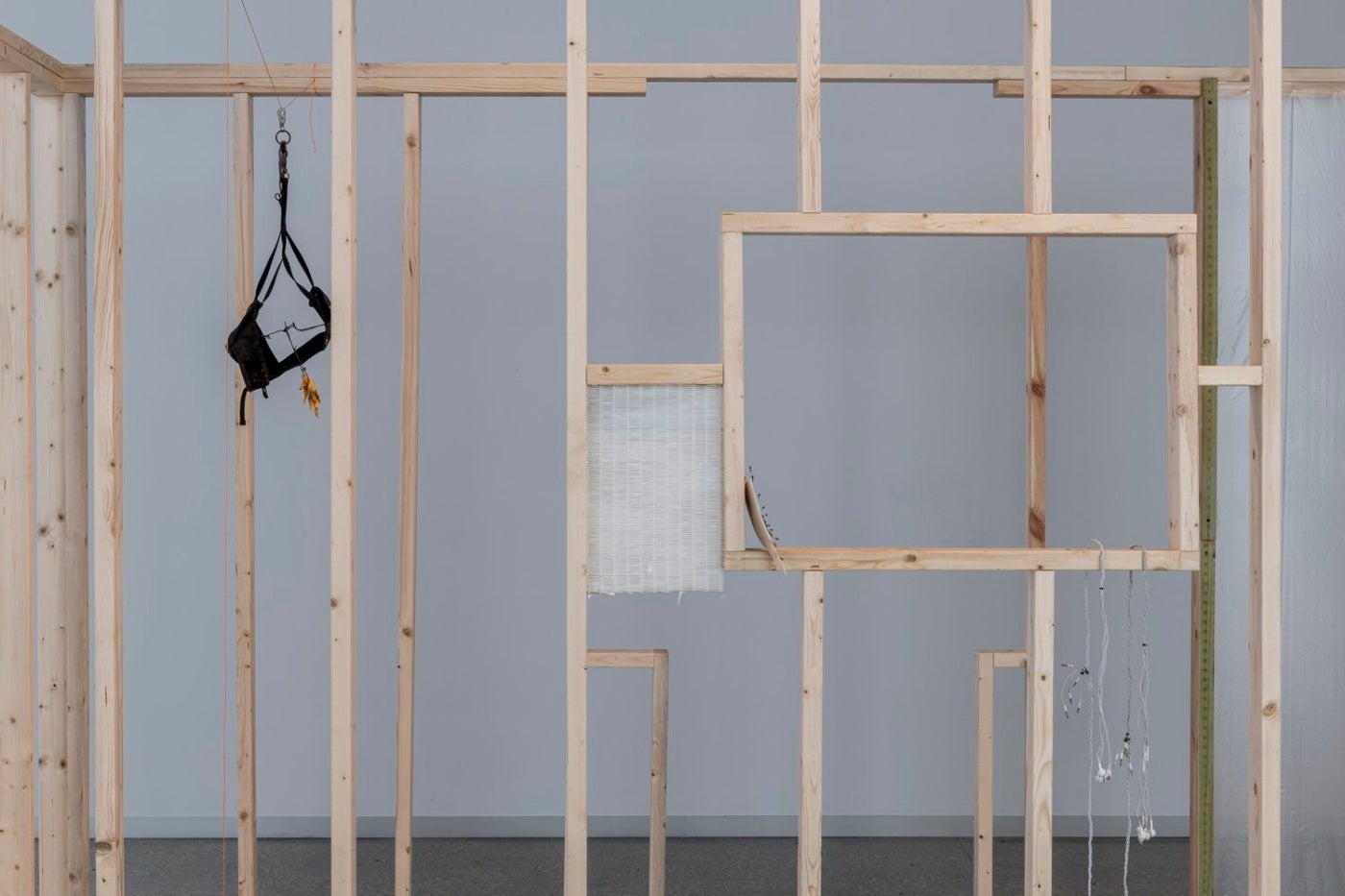
In the next room, old metal seats protrude at a right angle to each other, bearing traces of chemical corrosion. A black pumice stone on the floor sports a hole that, according to garcia, opens up to a different dimension. A deer skull holds a tennis ball, both installed atop a wooden water yoke with rhythmic black burn marks. Two bottles of piss-colored liquid, which is actually a mix kerosene and vinegar, flank an arrangement of kitchen backsplash panels on the floor. A friend’s suicide note, torn into indecipherable pieces, is scattered on the panels next to a deer bone. Ghosts keep tied to their homeports by acts of violence, garcia believes, and scholarly histories of visitations seem to support their intuition.[6] The marks of corrosion and decay are best suited to signify both violence and presence. This, and a myriad of empty shells: piles of bleached goat skins in room one, a room-to-ceiling window encrusted by hundreds of horizontal cucumber slices that lose their coloration in the demanding Texas sun.
Garcia does not see their installation as a form of invocation. “I am not waiting for someone to appear,” they say, “I just show how such experiences shape materials.” while you were out, therefore, is not a waiting room, but a three-dimensional postscript to loss and grief. Just like hard matter, parasocial relationships might deteriorate and whither over time, like those cucumber slices in the window, and new ones appear in their place. In garcia’s installation, just as an object is never dully there, loss is never final.
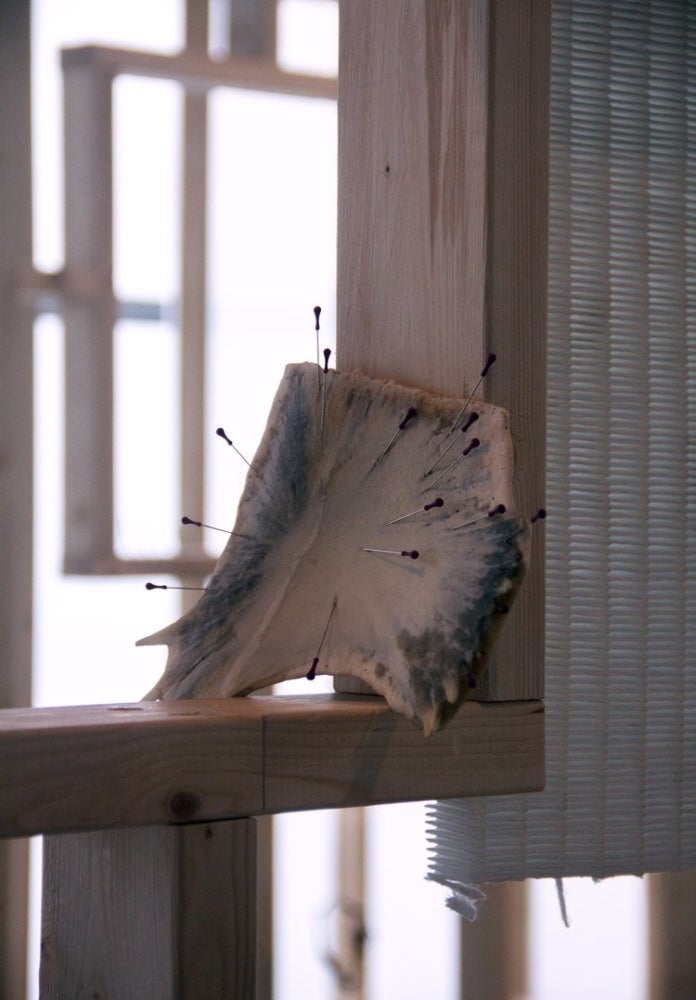
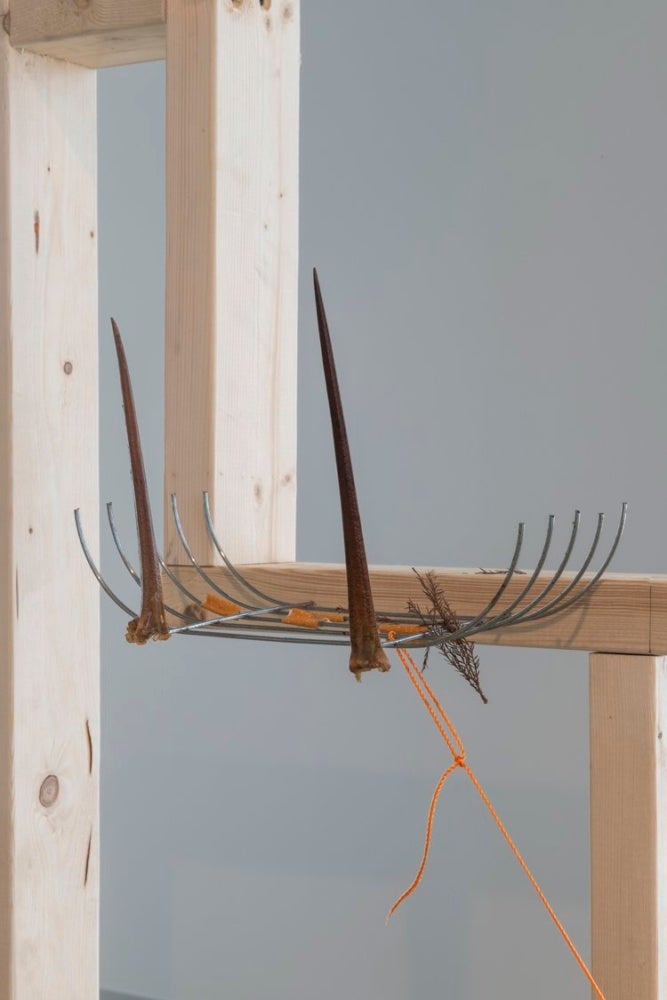
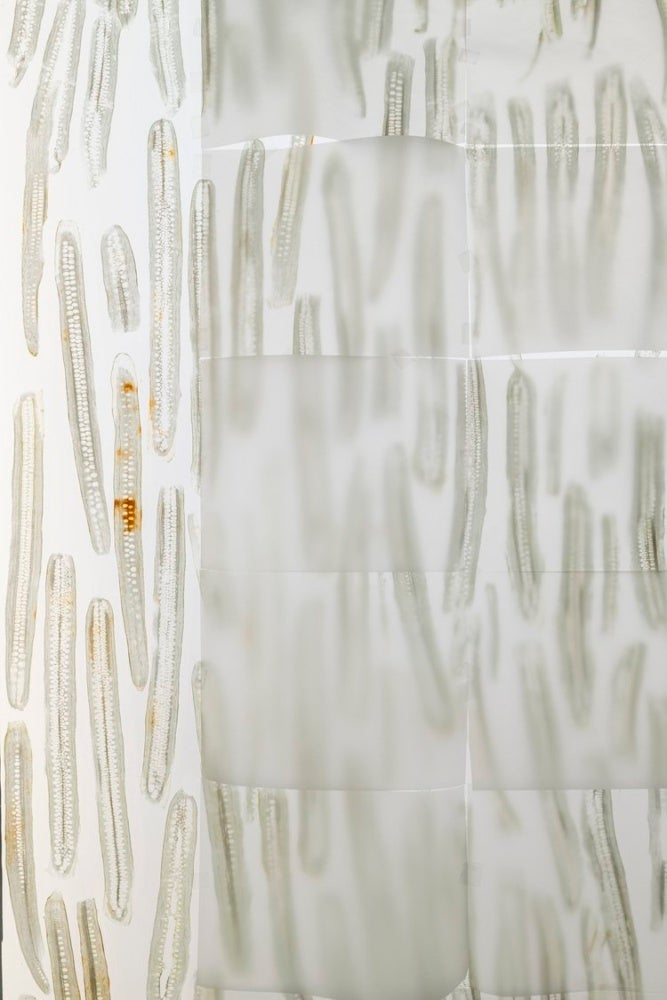
[1] See, for example, Blanco, María del Pilar, and Esther Peeren, eds. The Spectralities Reader : Ghosts and Haunting in Contemporary Cultural Theory / Edited by Maria Del Pilar Blanco and Esther Peeren. New York: Bloomsbury Academic, 2013;
[2] Interview with the author, 10.06.2025.
[3] Founded in 2017, Replika is one of the first apps to offer conversations with AI-powered “companions”.
[4] Hudson, Martyn. Ghosts, Landscapes and Social Memory Martyn Hudson. Abingdon, Oxon ; Routledge, an imprint of the Taylor & Francis Group, 2017. P. 15.
[5] Interview with the author, 12.07.2025.
[6] For example, Finucane, Ronald C. Ghosts : Appearances of the Dead & Cultural Transformation / R.C. Finucane. Amherst, N.Y: Prometheus Books, 1996.

